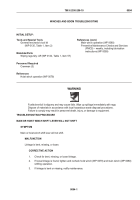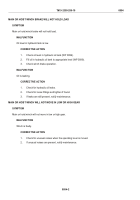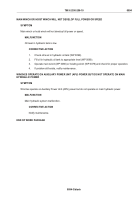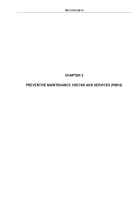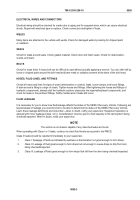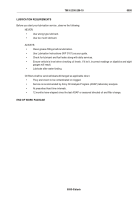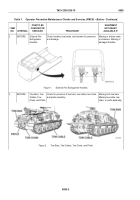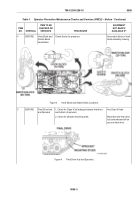TM-9-2350-256-10 - Page 509 of 796
PREVENTIVE MAINTENANCE CHECKS AND SERVICES (PMCS),
INCLUDING LUBRICATION INSTRUCTIONS, INTRODUCTION
GENERAL
Safe and efficient vehicle operation requires regular checks of equipment. When performing PMCS, the crew
discovers malfunctions or performs routine maintenance for upkeep of the vehicle's systems. Malfunctions require
corrective action to avoid equipment failure or injury to personnel. The suspension system requires special
attention. Ensure that all Lubrication Instructions (WP 0101) assigned to the crew are performed. The first user of
the vehicle must perform all BEFORE, DURING, and AFTER checks.
Intervals
The PMCS listed are to be performed at operator level at intervals determined by whichever comes first:
1.
Before
2.
During
3.
After
4.
Weekly
5.
Monthly
The PMCS tasks listed are to be scheduled on DD Form 314, Preventive Maintenance Schedule and Record
(WP 0131) In Accordance With (IAW) DA PAM 750-8, The Army Maintenance Management System (TAMMS)
Users Manual (WP 0131).
After operation in water, mud, dust, or loose sand, the vehicle should be cleaned as soon as possible. Lubricate
without waiting for the next scheduled service.
Warnings and Cautions
Always observe the WARNINGs, WARNING icons, and CAUTIONs in your PMCS table. WARNINGs, WARNING
icons, and CAUTIONs appear before applicable procedures. You must observe these WARNINGs, WARNING
icons, and CAUTIONs to prevent serious injury to yourself and others or prevent equipment from being damaged.
EQUIPMENT INSPECTION MAINTENANCE WORKSHEET
DA Form 5988-E, Equipment Inspection Maintenance Worksheet (WP 0131), is used by the mechanic to record
periodic maintenance services performed and faults corrected. The item number on DA Form 5988-E (WP 0131)
must correspond to the item number of the preventive maintenance check.
Specified items to be checked are in Tables 1 through 3. Before you begin to check specific items, remember to
check things in common in all areas.
CORROSION PREVENTION AND CONTROL (CPC)
Corrosion prevention and control of Army materiel is a continuing concern. It is important that any corrosion
problems with this item be reported so that the problem can be corrected and improvements can be made to
prevent the problem in future items. The term "corrosion" means the deterioration of a material or its properties
due to a reaction of that material with its chemical environment. An example is the rusting of iron. Corrosion
damage in metals can be seen, depending on the metal, as tarnishing, pitting, fogging, surface residue, and/or
cracking. Plastics, composites, and rubbers can also degrade (also considered to be corrosion based on the
above definition of corrosion). Degradation is caused by thermal (heat), oxidation (oxygen), solvation (solvents),
or photolytic (light, typically ultraviolet) processes. The most common exposures are excessive heat or light.
TM 9-2350-256-10
0095
0095-1
Back to Top





